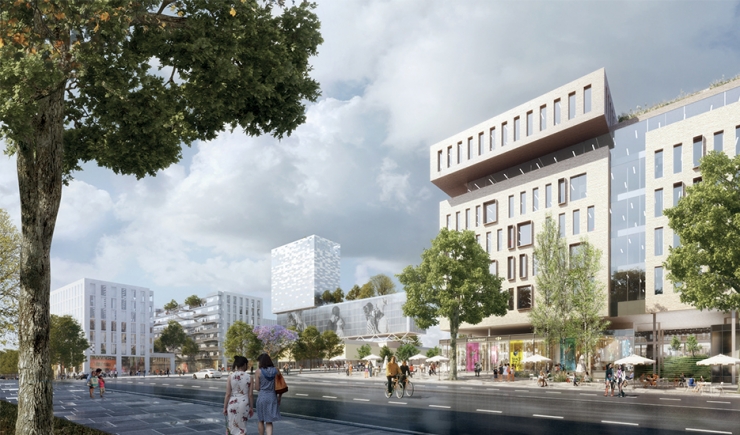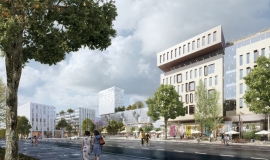
Observatory of the Grand Paris Express Station Neighbourhoods
In 2025 sixteen new stations will be served on Line 15 South, from Pont de Sèvre to Noisy-Champs. Approximately 4.1 million square metres are scheduled to be redeveloped, divided among 80 urban projects and covering 21% of the surface area of station neighbourhoods. Over the next 10 years these projects will bring about the creation of 33,000 housing units, 1.4 million m2 of office spaces, and almost 0.9 million m2 of areas given over to other business activities. Urban renovation operations are also underway in 12 neighbourhoods out of the 16 which will ensure that populations already living there will remain and will improve their living environment. This study on urban transformation in station neighbourhoods on Line 15 South is the first of its kind to be published by the Observatory of Station Neighbourhoods managed by Apur, the company Société du Grand Paris and the Regional and Interdepartmental Department for Infrastructures and Development -DRIEA-. The public establishment Grand Paris Aménagement also contributed to the study. A second study will be published in the summer of 2019 dealing with the 19 stations on the other Grand Paris Express lines to be delivered by 2025. All the stations that are planned to open after 2025 will be the subject of future studies.
The study emphasises a trend towards re-establishing the balance of a functional and social diversity. Ultimately, the operations underway and to come should bring about an equilibrium of 60% housing, 40% businesses.
Many incentives for reducing inequalities were identified, among which the improved accessibility for social housing complexes, a significant number of diverse types of housing produced, (30% social housing in station neighbourhoods today and on average 800 new social housing units to be produced each year) in this way improved services of metropolitan facilities will be supplied, for example : educational establishments, Cité Descartes, University of Créteil, health services, Institut Gustave Roussy, cultural facilities, Mac Val, etc.).
At the environmental level, although the study shows that projects of the future are more ambitious compared with those already carried out, the multiplicity of key players calls for special attention to be paid so that the challenges of an inclusive and zero carbon city can be met. Geothermal energy, the use of wood, recycling excavated soil are but a few of the actions often carried out during the implementation of projects.
The place reserved for public spaces in the future station neighbourhoods remains minimal. Work carried out in this area proposes many possible initiatives to increase the benefits of the future Line 15 South, for example the creation of crossings and cycling facilities to facilitate feeder services at the stations.
Finally, even if territorial rebalancing is included in programmes, the gap between implementation and the analysis of operation schedules still shows today an enormous contrast between the two extremities of the line which should be diminished in time. To the west, the Pont de Sèvres neighbourhood is very advanced in its process of transformation with a greatly increased density, whereas to the east, in Noisy-Champs neighbourhood, where objectives are the same, there is a discrepancy in the level of achievement.
The study is available on the Apur site
Press contact:
Apur : Quentin Treton : Email – 01 83 97 63 59
Société du Grand Paris : Jérémy Huppenoire - Email - 06 34 47 16 18 or Guy-Arnaud Behiri - Email - 06 98 82 79 40
DRIEA : Stéphanie Carvalheiro – Email – 01 40 61 82 24

